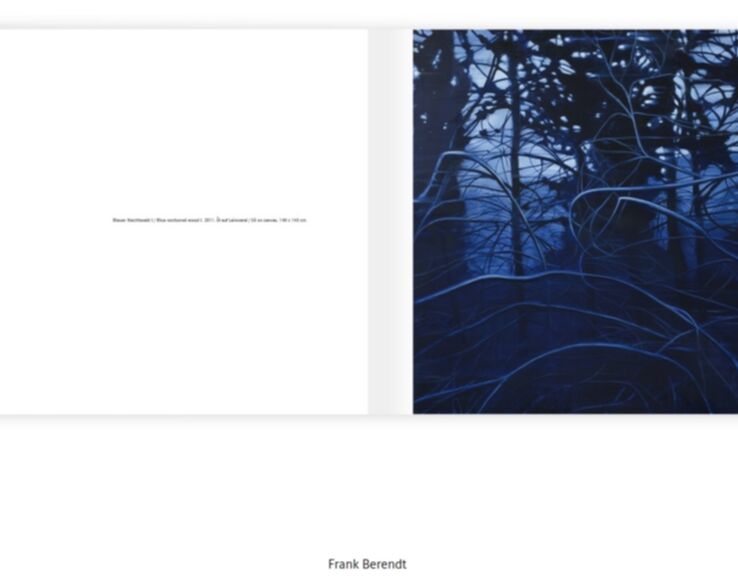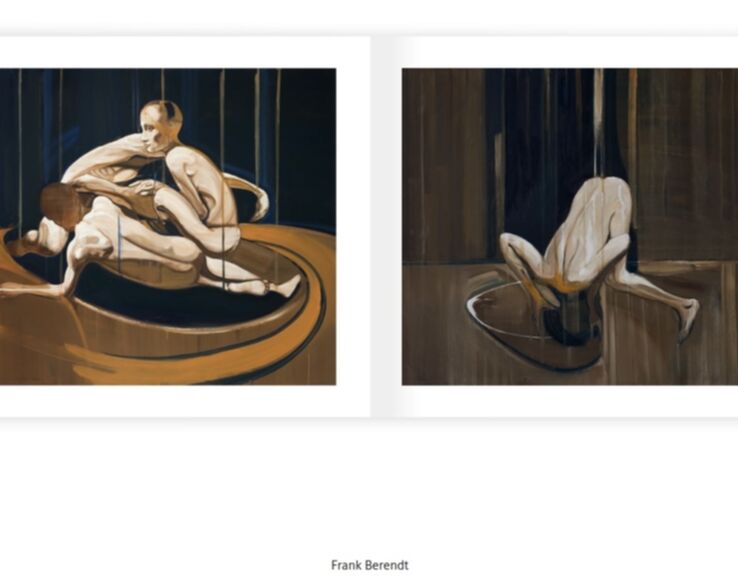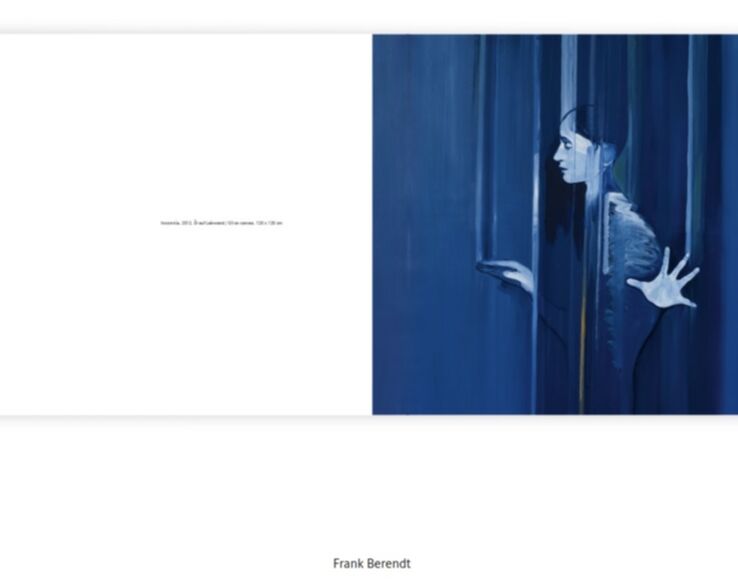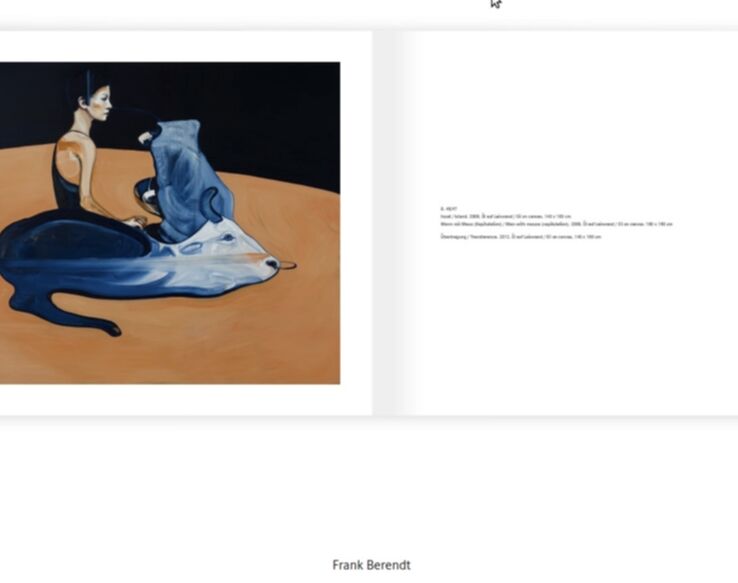About
Trial Tableau

ISBN 978-3-00-069960-3
copyright / 2021 Frank Berendt / Rolf Arnold / first edition 2021/ 500 copies.
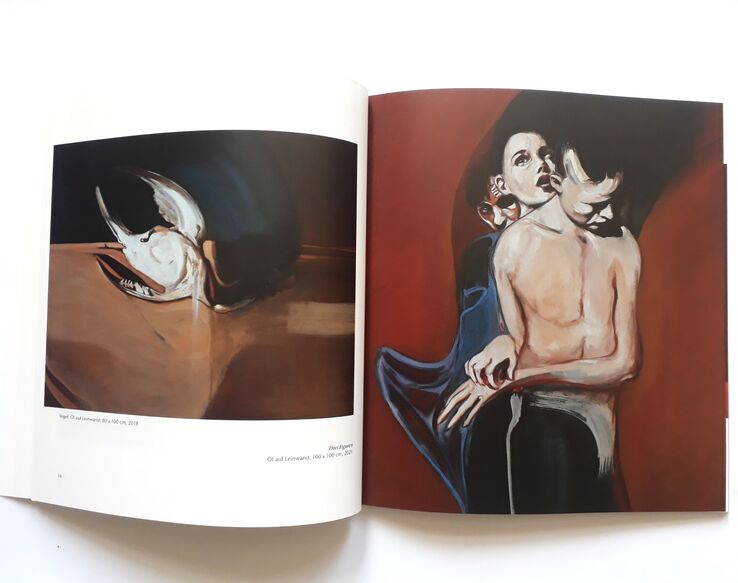
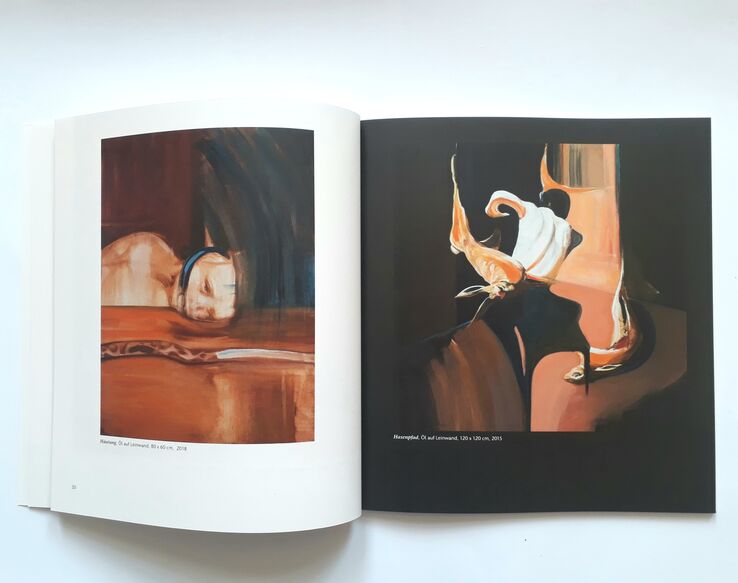
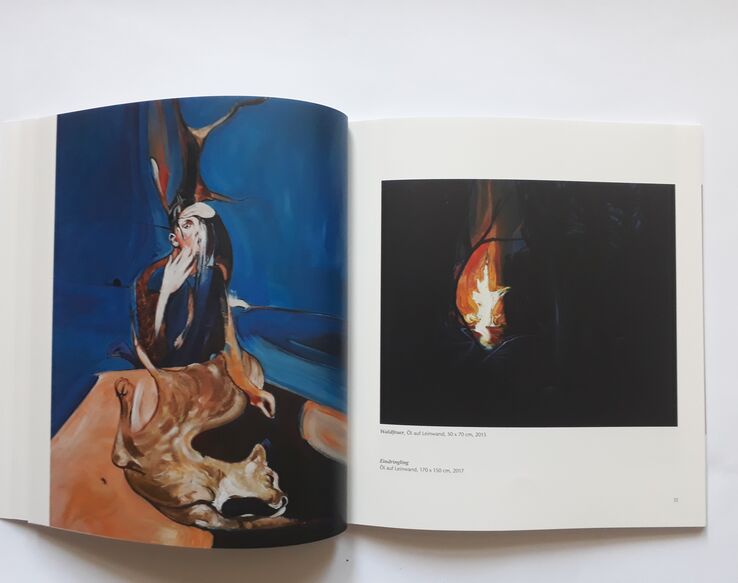
Stehende Strömung; Stopped Flow

ISBN 978-3866787063
So should you view all the conditional things of this fleeting world – as a dream, an illusion, a bubble, a shadow, like dew-drops, a flash of lightning, a cloud.
Diamant-Sutra
Foreword by Prof. Dr. Kai Uwe Schierz, Director of the Art Museums of the City of Erfurt
From 1988 to 1993, Frank Berendt studied painting and graphics with Professor Arno Rink at the Academy of Visual Arts in Leipzig, and he is a member of the New Leipzig School. Berendt, like many other Leipzig artists, favors figurative images, yet he shuns any form of narrative. Instead, his isolated figures float like dream-images before intensely coloured or shadowed but spatially indeterminate backgrounds. Everything seems movable, changeable, flowing, yet, at this one moment, fixed: like filmstills excerpted from a continuum of motion and change; form amid transformation,
the metamorphosis of all visible phenomena. Phantom images stabilized through the painting process – their fragmentary quality seems the result of their oscillation between origin and disappearance. The painted scenes, as well as the video-projections – whether of people, animals, objects, or liquid substances – resemble mental images: figurative projections of consciousness. This consciousness-like quality is also what gives Berendt’s work a strong feeling of reality. The momentary persistence of these mental images lends them an intimation of permanence, so much so that they seem to suggest the possibility of deepened looking, of contemplation. Frank Berendt’s works really do invite such contemplation, yet without any gestures toward devotion. Precisely crafted details call for such intensified looking – the viewer notices the watery aura of an eye, the sculpturally accented, harmonically formed contours of lips, the reflection of light on drops of water, or the nocturnal backlighting that breaks through an enchanted thicket in small doses: islands of focus in scenes that sometimes appear shadowy, as if seen through a veil. In terms of colour, his paintings display a reduced visual complexity, relying on strategies of complementary contrast or monochrome. Yet he lets the few colours shine intensely, composing harmonies of tones and trusting their emotional effects. His video works have their origin in painting, as well. They are characterized by superimpositions, painterly blurring, and a stretching of time, and because of their dematerialized, light-generated appearance, they seem even closer to mental images than the paintings.
Frank Berendt likes to portray human figures in tense groups or, in contrast, turning inward – in a state of internalization. Despite the depth of figurative detail, there are no portraits – representations of concrete, living people – in these works. Instead, the figurative elements have an exemplary quality – the individual stands for the many, as a concrete embodiment of the general. These images depict existence from a philosophical point of view. In contemporary art, this is a controversial approach, but one that Frank Berendt shares with other members of the New Leipzig School such as Neo Rauch – and even with the already-classic British painter Francis Bacon. At the same time, the relation to such artists points to the fact that with Berendt the viewer finds himself in a domain of pictorial suggestion that tends to transcend linguistic possibilities of representing the world in complete sentences. In delving deeper into Frank Berendt’s artistic practice, it becomes clear that his aesthetic approach corresponds closely with the devotion to Japanese martial art and Zen Buddhism that has shaped his life for many years. In fact, it seems possible to see Siddhârtha Gautama’s above-cited advice from the Diamond Sutra as the key that can open a door to a deeper understanding of the visual world of Frank Berendt. A central concept in this world, as in Mahayana Buddhism, is Shunyata, which ontologically points to the impossibility of ascribing an enduring substance or stable character to the phenomena of the world, and is therefore translated as „emptiness.” The Prajnaparamita Sutras, which include the Diamond Sutra as well as the famous Heart Sutra, contain many variations on the paradoxical thought „Form is emptiness, emptiness is form.” Such sentences are meant to encourage us to transcend conceptual distinctions and ultimately to relinquish a worldview that sees an intrinsic distance between subject and object. It is a radical change of perspective, which often seems to us as thinking subjects like an impossible undertaking. The Sanskrit word „paramita” in the title of the sutra refers to this comprehensive break, as it means „that which has reached the other shore.” For many, this is a spiritual act, while for others it formulates a universal-ecological view of the world: since the becoming and passing away of every thing is dependent on
the becoming and passing away of all other things, nothing can permanently exist in and of itself alone, and therefore everything lacks substance – is „empty.” Close observation of Frank Berendt’s work suggests that he is constantly searching for the perspective-shift of Shunyata in his artistic practice – and that he invites the viewer to do the same.
